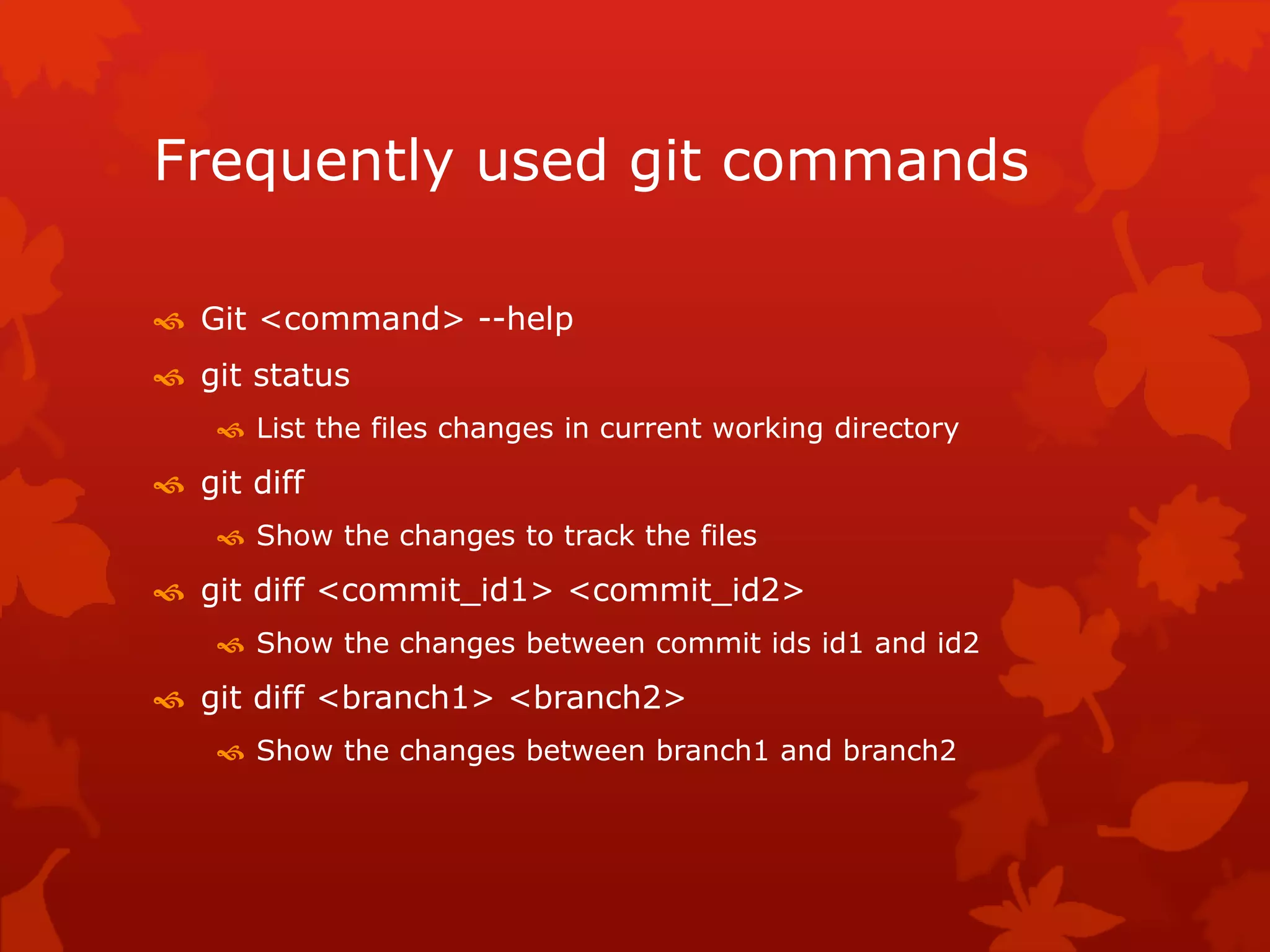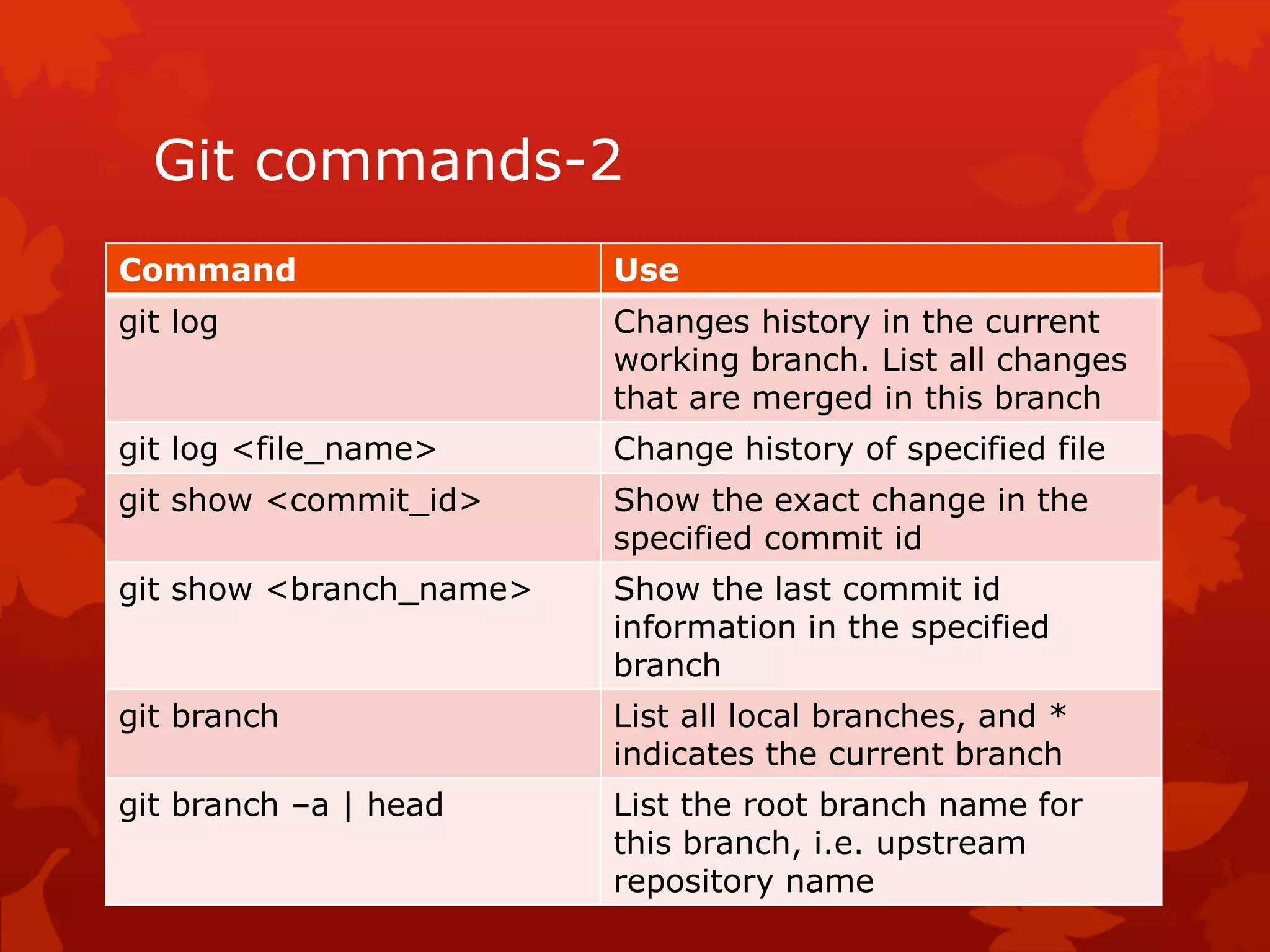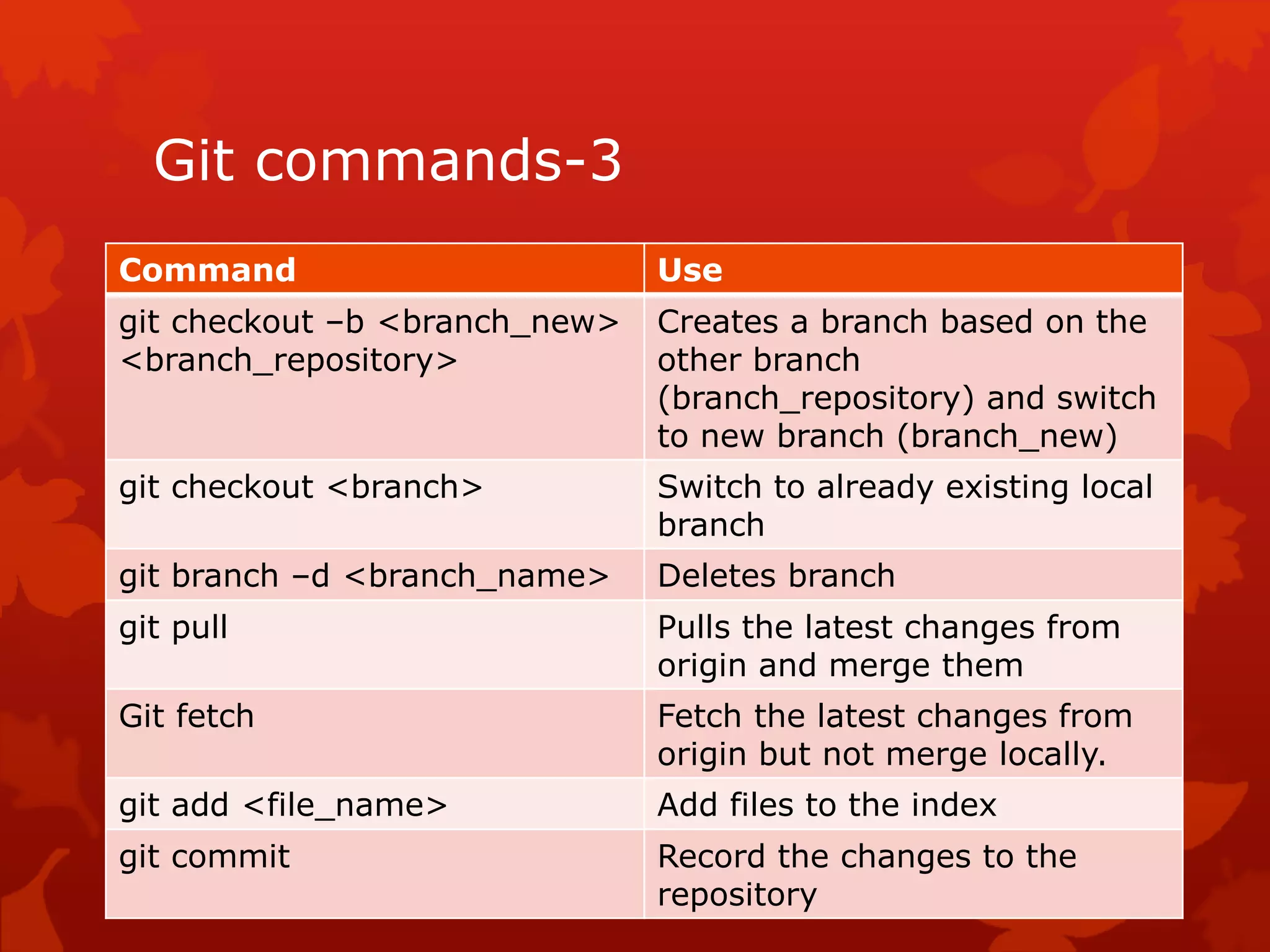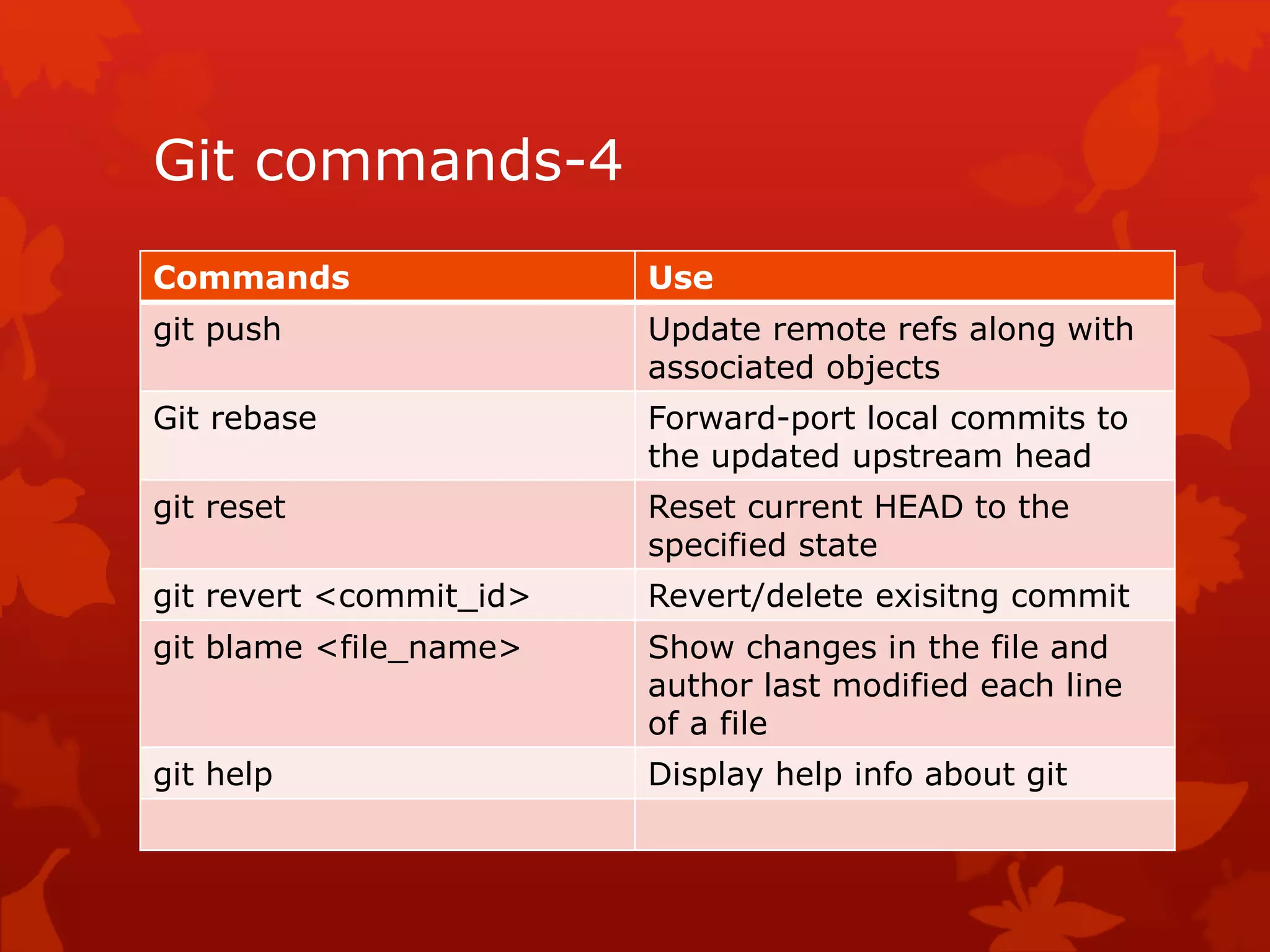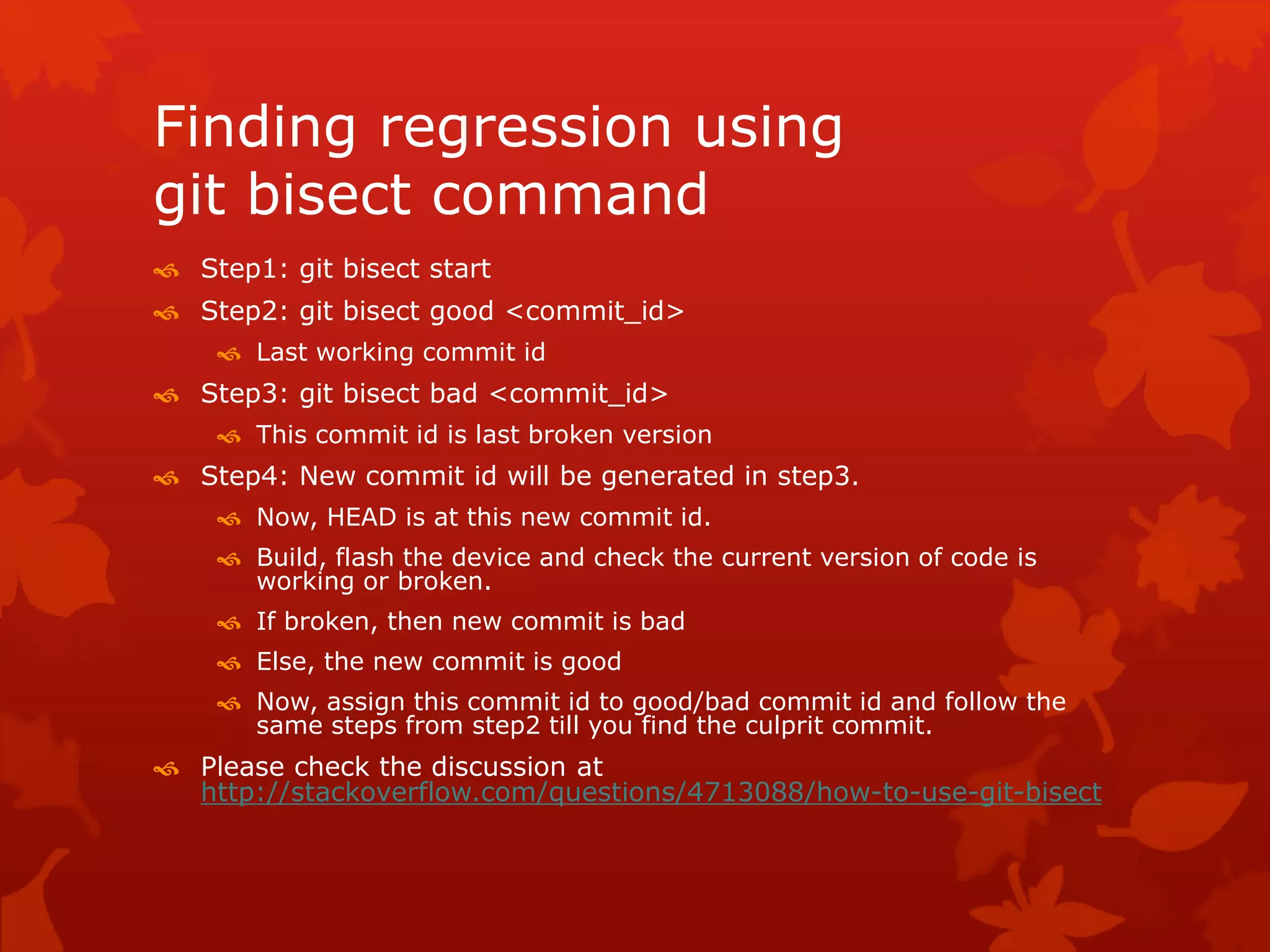The document outlines Git as a distributed revision control system with features like speed, data integrity, and a non-linear workflow. It provides frequently used commands for various Git operations such as checking status, viewing differences, managing branches, and recording changes. Additionally, it describes how to find regressions using the 'git bisect' command in a step-by-step manner.

![What is Git in linux
Distributed revision/version control system and Source
code manager
Features:
Speed
Data Integrity
Distributed & Non linear work flow
More info: try
man git
Source: [Wikipedia]](https://image.slidesharecdn.com/introductiontogitinlinuxandgitcommands-140918082601-phpapp02/75/Linux-GIT-commands-2-2048.jpg)
